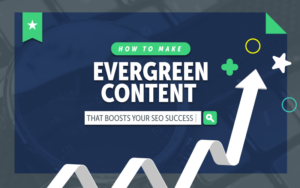Content is king. The content make use of niche or genre to express the importance towards explanation. The various types of content rules today’s market- editorial, education and thought leadership.
 Every day we hear about companies who randomly post things to their blog. Someone the other day mentioned to me how a group of people sat in a room and came up with blog posts for each quarter.
Every day we hear about companies who randomly post things to their blog. Someone the other day mentioned to me how a group of people sat in a room and came up with blog posts for each quarter.
Whatever sounded good, they would do.
We get that impulse. It’s fun. Freewheeling.
And it’s great. If you know your audience, your industry, and your brand you’ll probably hit on a few good ideas. And maybe some popular articles.
This works as long as your expectations match the way you built your audience.
Here’s what we mean:
- Generally speaking, content can be built on three types of content: brand, thought leadership, or education.
- Brand are stories about your company.
- Thought leadership is stories about your industries.
- Education is content that delivers answers.
Editorial Content
 This is the old newsroom re-imagined for a B2B blogging audience. You have an audience and you want to serve them, and you have a hunch that this topic will “resonate” because a lot of people are talking about it on social media.
This is the old newsroom re-imagined for a B2B blogging audience. You have an audience and you want to serve them, and you have a hunch that this topic will “resonate” because a lot of people are talking about it on social media.
Great! You wrote an article, and hopefully it does well and “resonates” with your audience. This approach assumes 2 things:
- That you have an audience
- That your opinions and expertise are worth sharing
Those two things take time. And quite frankly, people aren’t interested in what brands usually have to say on a topic — they’re interested in what a person has to say. Specifically, people that they know or have heard of.
That’s why it takes a while to build an audience. And the larger and more dedicated your audience, the more value your editorial content will provide.
Educational, Evergreen Content
 This is also known as “evergreen” content but it doesn’t have to stand forever. It’s called that because it doesn’t depend on current events. It’s a holdover from journalism world, but it’s actually content that provides answers to questions, and questions to problems.
This is also known as “evergreen” content but it doesn’t have to stand forever. It’s called that because it doesn’t depend on current events. It’s a holdover from journalism world, but it’s actually content that provides answers to questions, and questions to problems.
This is where search optimization really gets involved, though some searches are based on thought leadership and trends. Usually, this type of content is marked by 2 things:
- Keyword search volume
- The buying funnel
Educational content is meant for those two things, even though they don’t always match i.e. a high-intent buying keyword may not have much search volume.
But instead of brainstorming on what your audience wants, you look to Google to see what they’re already asking about.
Know Which One You Are Choosing
Which one do you choose? Content marketers (or maybe only the content marketers in my head) like to pit these two against each other. But they’re not mutually exclusive. In fact, most content marketing strategies should have both.
Content marketers (or maybe only the content marketers in my head) like to pit these two against each other. But they’re not mutually exclusive. In fact, most content marketing strategies should have both.
But you need to know which one you’re choosing. And then set your expectations on that.
Broadly speaking, don’t expect as much long-term search traffic from editorial content as you do evergreen content. Or at least expect an initial spike and then a nosedive.
Educational content is the inverse. There will very often be little traffic at first, but then it grows and compounds.
Set your expectations accordingly. #KhabarLive #hydnews








[…] stick to writing—create videos and podcasts for a varied content approach. The key is that your content marketing efforts always keep your customers top of mind. Think about what type of content you should […]
Comments are closed.